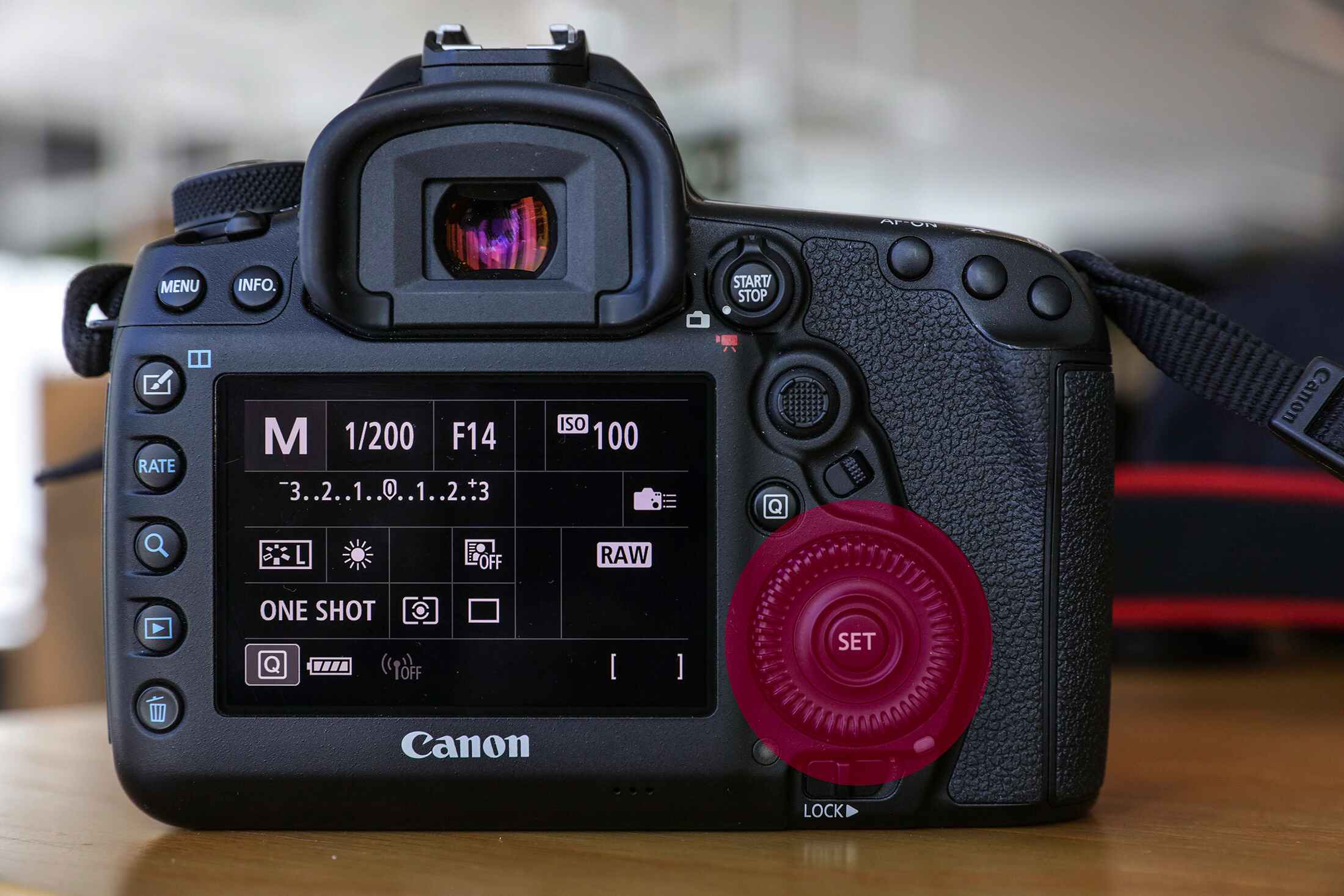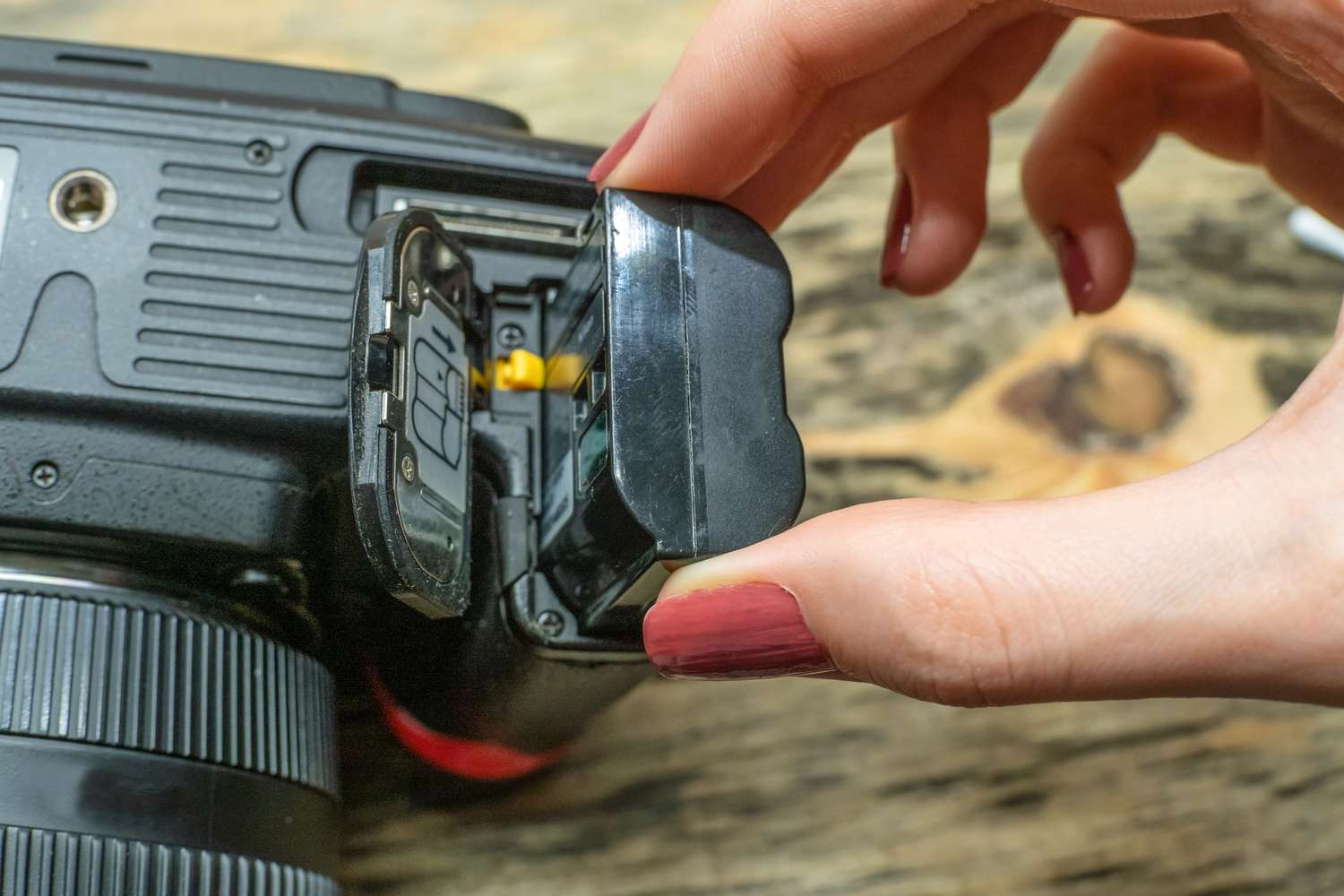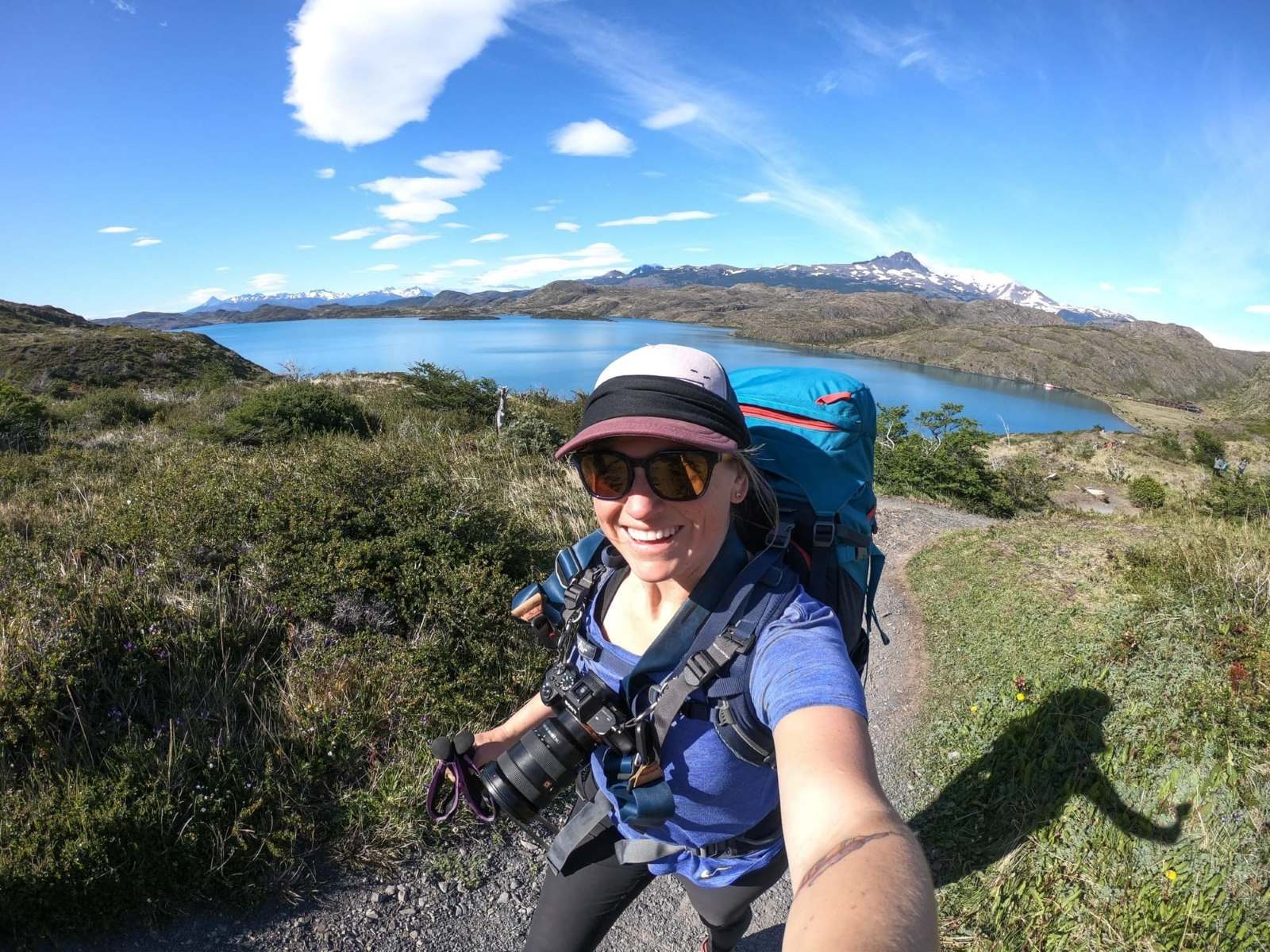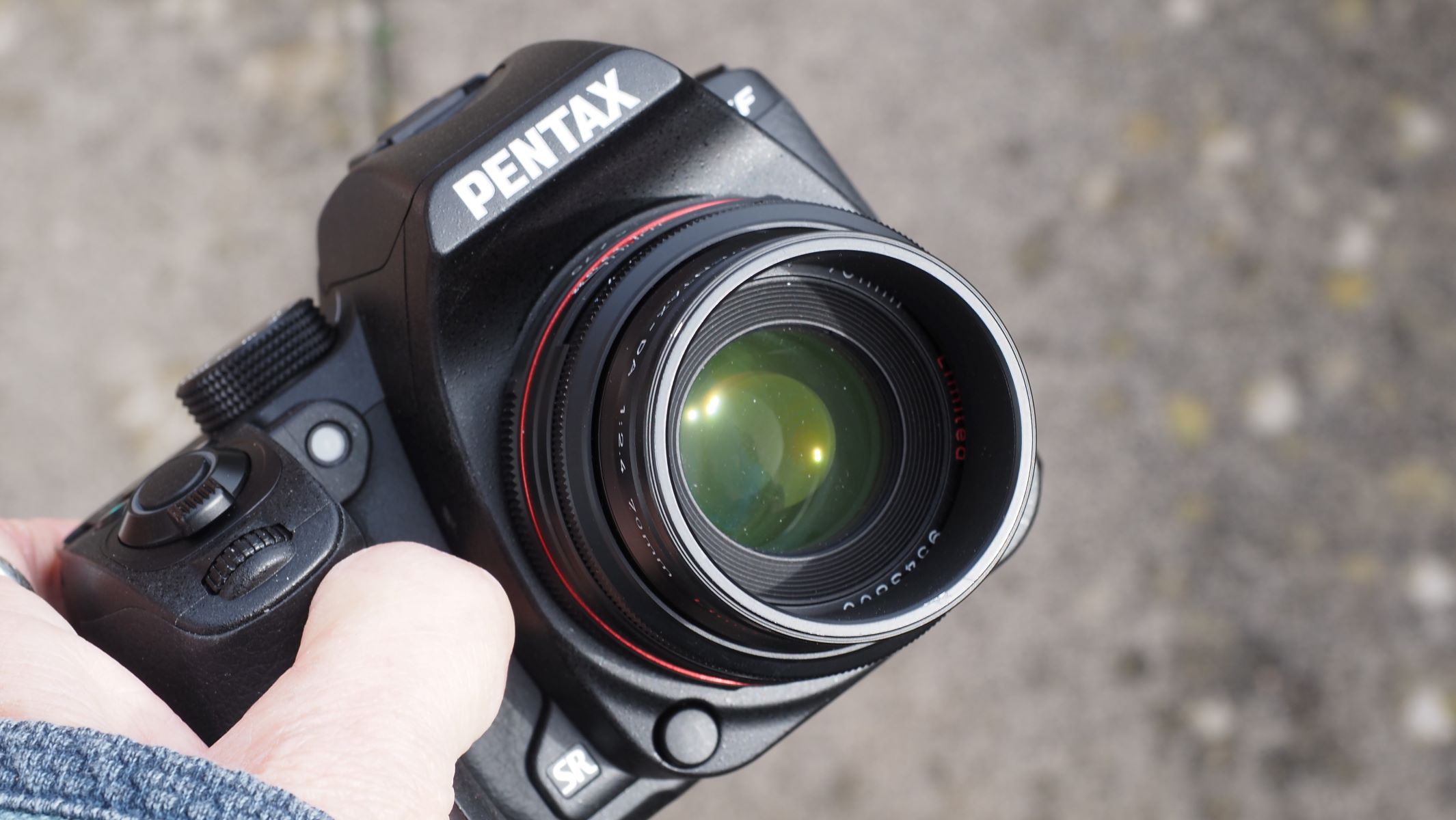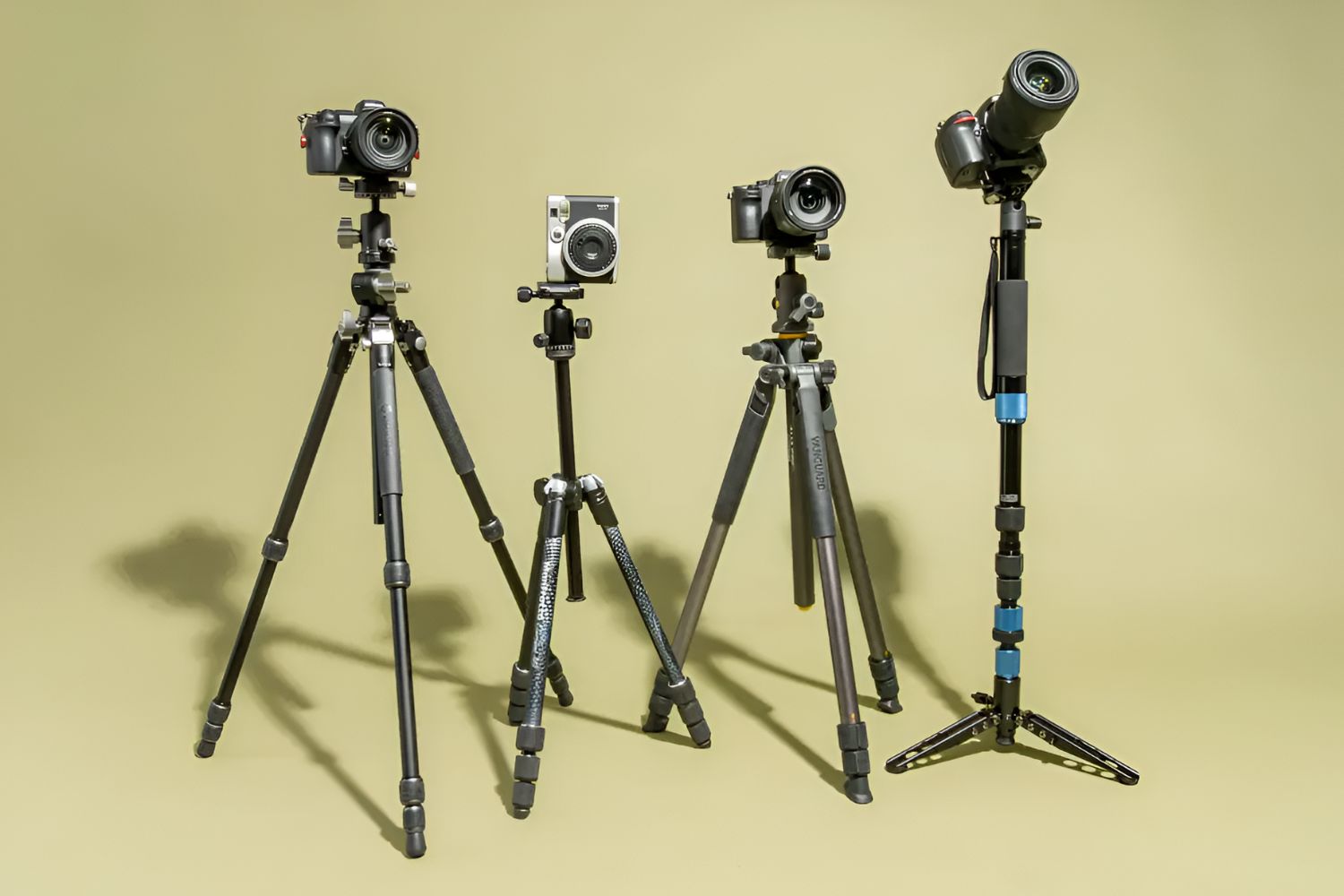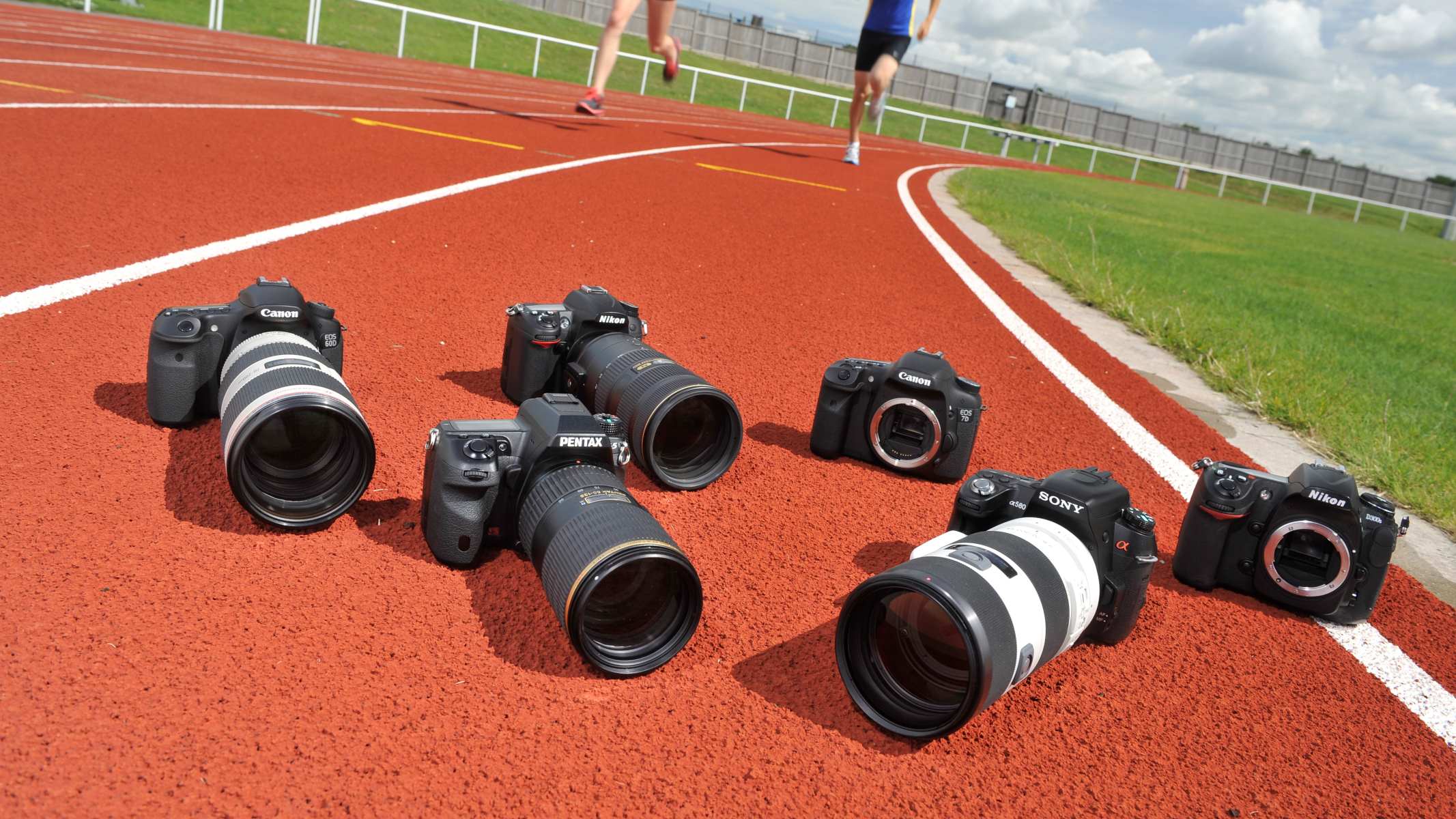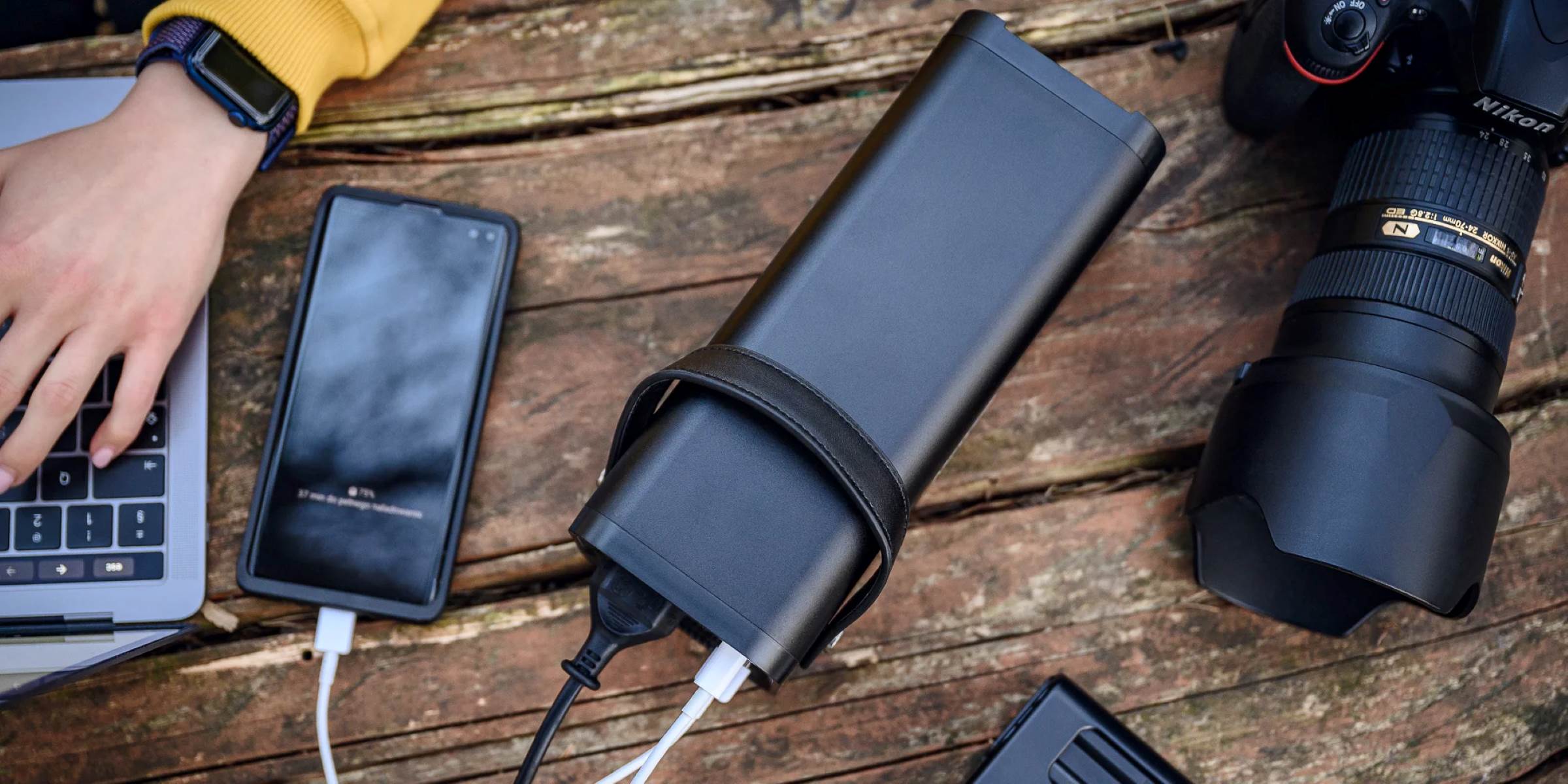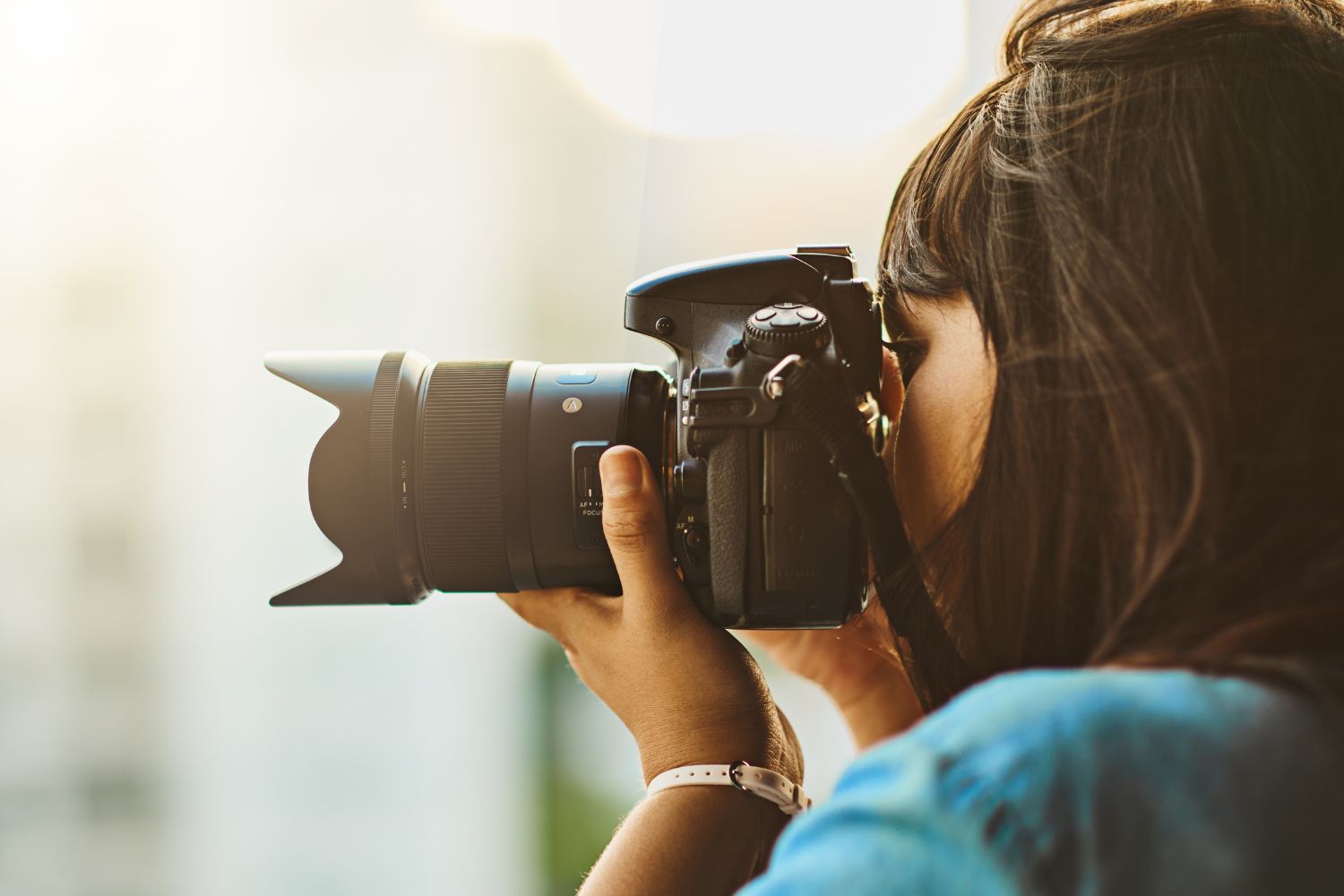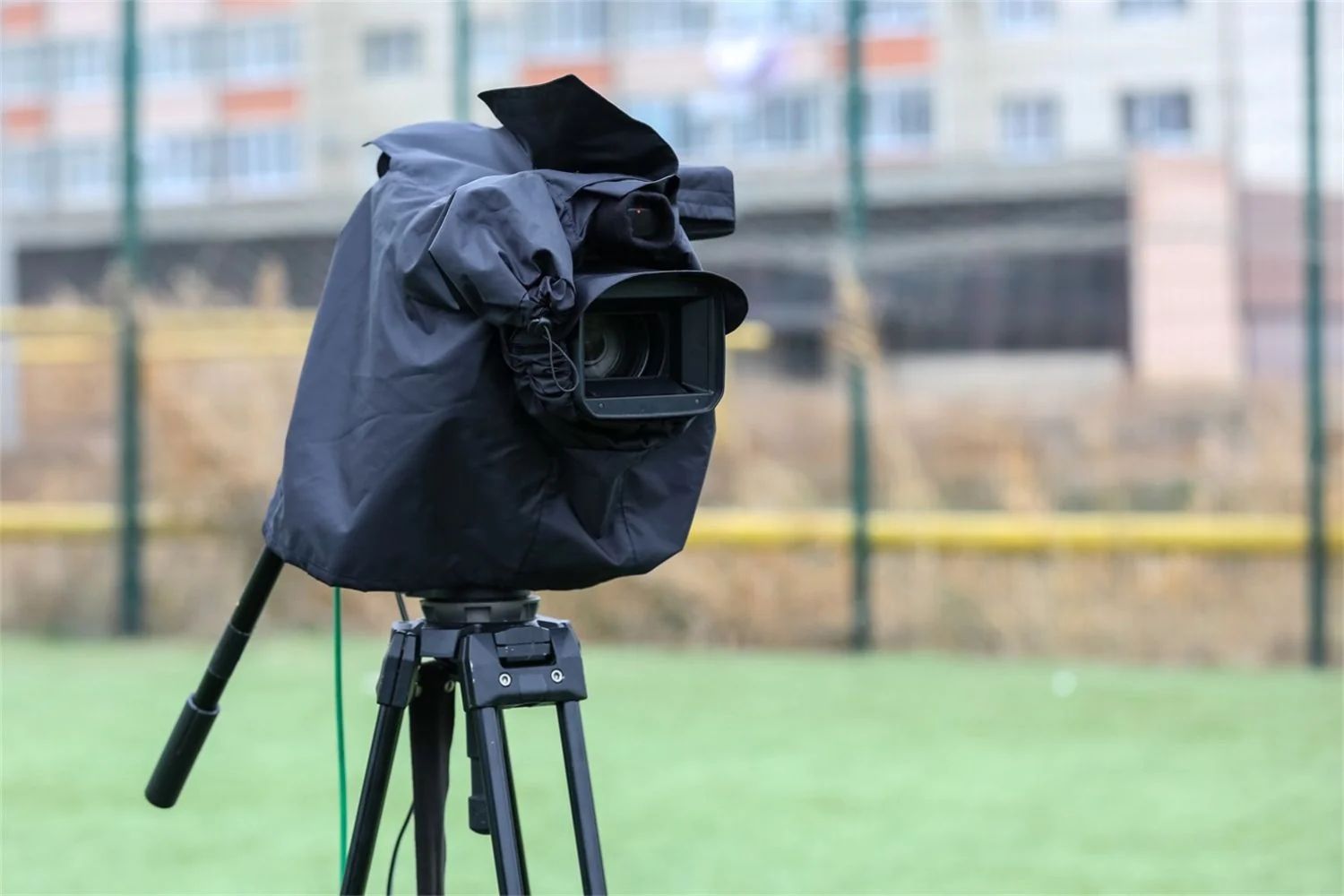Introduction
Introduction
Are you ready to elevate your outdoor photography game with a DSLR camera? Capturing stunning images in outdoor settings requires a keen understanding of your camera's settings and how to optimize them for different lighting conditions and subjects. With the right camera settings, you can bring out the vibrant colors of a sunset, freeze the motion of a cascading waterfall, or capture the intricate details of a blooming flower. In this guide, we'll delve into the essential settings you need to consider when shooting outdoors with a DSLR camera, empowering you to unleash your creativity and capture breathtaking moments in nature.
Whether you're a seasoned photographer or just starting with a DSLR camera, mastering the art of outdoor photography settings can significantly enhance the quality of your images. From adjusting aperture and shutter speed to selecting the appropriate ISO and white balance, each setting plays a crucial role in achieving the perfect outdoor shot. Additionally, understanding metering modes, focus modes, and the impact of different lenses and filters will further expand your creative possibilities. By the end of this guide, you'll be equipped with the knowledge to confidently navigate your camera's settings and capture the beauty of the great outdoors with precision and artistry.
So, grab your DSLR camera, pack your sense of adventure, and let's embark on a journey to unlock the full potential of outdoor photography. Whether you're exploring rugged landscapes, capturing wildlife in their natural habitat, or simply immersing yourself in the beauty of nature, understanding and mastering these camera settings will enable you to preserve the magic of the outdoors through your lens. Let's dive into the world of outdoor photography settings and unleash your creative vision amidst the wonders of nature.
Choosing the Right Camera Settings
When venturing into the realm of outdoor photography with a DSLR camera, the ability to select the right camera settings is paramount to capturing stunning images that encapsulate the beauty of nature. Each setting plays a crucial role in determining the final outcome of your photographs, and understanding how to manipulate these settings will empower you to unleash your creativity and achieve breathtaking results.
Before diving into the specific settings, it’s important to consider the unique characteristics of the outdoor environment. The ever-changing natural light, diverse subjects, and dynamic landscapes all demand a thoughtful approach to camera settings. By carefully tailoring your aperture, shutter speed, ISO, white balance, metering mode, and focus mode to suit the outdoor conditions, you can elevate your photography to new heights.
As you embark on your outdoor photography journey, keep in mind that the perfect camera settings may vary depending on the specific scene, lighting, and creative vision. Experimenting with different settings and understanding their impact will ultimately refine your ability to make informed decisions and capture the essence of the outdoors with precision and artistry.
Now, let’s delve into the intricate details of each camera setting, unraveling their significance in the context of outdoor photography. By mastering these settings, you’ll possess the knowledge and expertise to adapt to various outdoor scenarios, from vibrant sunsets and lush forests to rugged mountains and serene lakeshores. With a firm grasp of the right camera settings, you’ll be primed to seize the magic of the great outdoors and immortalize its beauty through your lens.
Aperture
Understanding and harnessing the power of aperture is fundamental to creating visually captivating outdoor photographs with a DSLR camera. Aperture, measured in f-stops, dictates the size of the opening in the lens through which light enters. This setting not only influences the amount of light reaching the camera’s sensor but also determines the depth of field in your images, playing a pivotal role in shaping the visual impact of your outdoor shots.
When shooting outdoors, the choice of aperture can significantly affect the overall look and feel of your photographs. A wider aperture (represented by a lower f-stop number, such as f/2.8) allows more light to enter the lens, resulting in a shallow depth of field. This is ideal for isolating subjects from the background, such as capturing a single flower against a blurred backdrop or emphasizing a specific element in a landscape while creating a dreamy, ethereal effect.
Conversely, a narrower aperture (indicated by a higher f-stop number, like f/11 or f/16) reduces the amount of light passing through the lens, resulting in a greater depth of field. This is beneficial for landscape photography, where you aim to capture intricate details across a vast scene, from the foreground to the distant horizon, in sharp focus. By carefully selecting the appropriate aperture based on your creative vision and the characteristics of the outdoor scene, you can infuse your images with depth, dimension, and visual impact.
Furthermore, understanding how aperture influences the diffraction and sharpness of your photographs is crucial. While wider apertures excel in creating stunning bokeh and emphasizing the main subject, narrower apertures enhance overall sharpness and detail throughout the entire frame. By mastering the art of aperture selection, you’ll be able to craft outdoor images that resonate with depth, clarity, and artistic expression, bringing the natural world to life through your lens.
Shutter Speed
Mastering the intricacies of shutter speed is essential for achieving remarkable outdoor photography results with a DSLR camera. Shutter speed dictates the duration for which the camera’s shutter remains open, controlling the amount of light that reaches the sensor and enabling you to freeze or blur motion in your outdoor shots. Understanding how to manipulate this setting empowers you to capture the dynamic essence of nature with precision and creativity.
When photographing outdoor scenes, the choice of shutter speed can profoundly impact the visual narrative of your images. A faster shutter speed, such as 1/1000 of a second, is ideal for freezing fast-moving subjects, whether it’s a soaring bird in flight, a cascading waterfall, or the swift movements of wildlife. By effectively freezing motion, you can preserve intricate details and fleeting moments, immortalizing the vitality and energy of the natural world in your photographs.
Conversely, employing a slower shutter speed, such as 1/30 of a second or longer, introduces the captivating element of motion blur into your outdoor images. This technique can be employed to convey a sense of movement and fluidity, such as capturing the graceful sway of branches in the wind, the gentle flow of a meandering stream, or the mesmerizing trails of stars in the night sky. By skillfully harnessing the power of slower shutter speeds, you can infuse your outdoor photographs with a captivating sense of dynamism and evocative storytelling.
Furthermore, understanding the relationship between shutter speed and exposure is crucial when navigating the diverse lighting conditions encountered in outdoor photography. Balancing the desired shutter speed with other exposure settings, such as aperture and ISO, allows you to maintain optimal exposure while achieving your creative vision. Additionally, embracing long exposure techniques, facilitated by extended shutter speeds, can yield ethereal effects, such as silky waterfalls and painterly cloud movements, adding a touch of enchantment to your outdoor photography repertoire.
By honing your understanding of shutter speed and its impact on capturing motion and light, you’ll possess the expertise to breathe life into your outdoor images, immortalizing the dynamic beauty of nature with every click of the shutter.
ISO
When venturing into the realm of outdoor photography with a DSLR camera, mastering the ISO setting is crucial for adapting to the diverse lighting conditions and achieving exceptional image quality. ISO, which refers to the sensor’s sensitivity to light, plays a pivotal role in shaping the exposure and overall visual character of your outdoor photographs. Understanding how to leverage ISO effectively empowers you to navigate varying light intensities and capture stunning outdoor scenes with finesse.
In outdoor settings, the choice of ISO is instrumental in balancing exposure and minimizing digital noise in your images. A lower ISO, such as 100 or 200, is ideal for bright, well-lit environments, preserving fine details and producing images with minimal noise. This setting is well-suited for capturing expansive landscapes, vibrant sunsets, and other outdoor scenes bathed in ample natural light, allowing you to achieve crisp, high-quality photographs with exquisite clarity and depth.
Conversely, when faced with low-light conditions or the need to maintain faster shutter speeds, elevating the ISO becomes essential. Higher ISO values, such as 800, 1600, or beyond, enhance the sensor’s sensitivity to light, enabling you to capture compelling outdoor images in dimly lit or fast-paced scenarios. By judiciously increasing the ISO, you can effectively mitigate the impact of low light while preserving the integrity of your compositions, ensuring that even fleeting moments in the outdoor realm are immortalized with remarkable detail and luminosity.
However, it’s important to exercise caution when pushing the ISO to higher levels, as this can introduce digital noise and reduce overall image quality. Understanding the threshold at which your camera’s sensor performs optimally and employing noise reduction techniques when necessary are key aspects of mastering ISO for outdoor photography. By striking a harmonious balance between ISO, aperture, and shutter speed, you can harness the full potential of your DSLR camera to capture the splendor of the natural world with unparalleled clarity and fidelity.
By honing your proficiency in manipulating ISO to suit the nuances of outdoor lighting, you’ll possess the expertise to adapt seamlessly to changing environments, ensuring that your outdoor photographs radiate with stunning visual impact and technical prowess.
White Balance
When immersing yourself in outdoor photography with a DSLR camera, understanding and harnessing the intricacies of white balance is paramount for achieving accurate color representation and visual harmony in your images. White balance, a fundamental setting that determines the overall color temperature of your photographs, enables you to adapt to the diverse lighting conditions encountered in outdoor environments, ensuring that your images exude natural and lifelike tones.
Outdoor settings present a myriad of lighting scenarios, from the warm, golden hues of a sunset to the cool, blue tones of a serene lake at twilight. Adjusting the white balance setting allows you to calibrate your camera’s perception of color temperature, ensuring that the whites appear neutral and that the entire color spectrum is faithfully rendered. By selecting the appropriate white balance setting, you can capture the true essence of outdoor scenes, preserving the nuanced interplay of light and color with precision and authenticity.
For instance, when basking in the warm glow of a sunrise or sunset, choosing a “Cloudy” or “Shade” white balance setting can enhance the richness of golden and amber tones, infusing your images with a captivating warmth that evokes the magic of the golden hour. Conversely, when faced with the serene tranquility of a moonlit night or the ethereal glow of a snowy landscape, opting for a “Tungsten” or “Daylight” white balance setting can ensure that the cool, bluish hues are faithfully reproduced, encapsulating the serene ambiance of the scene.
Furthermore, embracing the creative potential of custom white balance settings empowers you to fine-tune color rendition according to your artistic vision, ensuring that every outdoor photograph resonates with your intended mood and atmosphere. By calibrating the white balance to suit the specific nuances of the outdoor environment, you can elevate your images to new heights, imbuing them with a captivating sense of authenticity and emotional resonance.
By mastering the art of white balance and its impact on color fidelity in outdoor photography, you’ll possess the expertise to infuse your images with lifelike hues and visual allure, ensuring that the natural beauty of the great outdoors is faithfully preserved and celebrated through your lens.
Metering Mode
Understanding and utilizing the metering mode function of your DSLR camera is essential for achieving optimal exposure and capturing the nuances of light in outdoor photography. Metering mode determines how your camera evaluates the brightness of a scene, enabling you to effectively balance highlights and shadows while preserving the integrity of your outdoor images. By mastering the intricacies of metering mode, you can confidently navigate diverse lighting conditions and ensure that your photographs radiate with balanced luminosity and captivating detail.
When capturing outdoor scenes, your choice of metering mode profoundly influences the exposure and tonal range of your images. The three primary metering modes – evaluative (matrix), center-weighted, and spot metering – offer distinct approaches to assessing light and shadow within the frame. Evaluative metering, the default mode for many DSLR cameras, analyzes the entire scene and intelligently calculates the optimal exposure settings, making it well-suited for a wide range of outdoor scenarios, from expansive landscapes to dynamic wildlife encounters.
Center-weighted metering places emphasis on the central portion of the frame, ideal for situations where the main subject occupies a significant portion of the composition, such as portrait photography amidst natural surroundings. This mode ensures that the primary subject is accurately exposed, while still considering the overall lighting conditions of the scene. Spot metering, on the other hand, measures light from a specific point within the frame, offering precise control over exposure, making it invaluable for capturing outdoor details or subjects against challenging lighting backdrops.
By understanding the nuances of each metering mode and its suitability for different outdoor scenarios, you can confidently adapt to varying lighting conditions and achieve compelling exposure outcomes. Whether you’re capturing the grandeur of a mountain vista, the delicate intricacies of a flower in bloom, or the captivating expressions of wildlife, the appropriate metering mode empowers you to preserve the nuanced interplay of light and shadow with finesse and accuracy.
Furthermore, embracing exposure compensation in conjunction with metering mode allows you to fine-tune the overall brightness of your images, ensuring that the tonal range and contrast align with your creative vision. By harnessing the power of metering mode and exposure compensation, you can navigate the complexities of outdoor lighting and produce images that resonate with balanced luminosity and captivating visual impact.
Focus Mode
Mastering the intricacies of focus mode is essential for achieving sharp, well-defined outdoor photographs with a DSLR camera. The focus mode setting governs how your camera locks onto and tracks subjects, ensuring precise focus and clarity in your outdoor images. By understanding the nuances of focus mode and its various options, you can confidently capture the dynamic beauty of nature with impeccable sharpness and detail.
When navigating the diverse subjects and scenes encountered in outdoor photography, the choice of focus mode significantly impacts the accuracy and speed of your camera’s autofocus system. Single autofocus (AF-S) mode, often employed for stationary subjects, allows you to lock focus on a specific element within the frame, ensuring that your subject remains crisply defined and well-detailed. This mode is ideal for capturing landscapes, still life compositions, and other static outdoor subjects with precision and clarity.
Conversely, when faced with dynamic or moving subjects, continuous autofocus (AF-C) mode becomes indispensable, enabling your camera to track and adjust focus as the subject moves within the frame. This mode is well-suited for wildlife photography, sports action shots, and other outdoor scenarios where subjects are in motion, ensuring that every fleeting moment is captured with unparalleled sharpness and accuracy.
Furthermore, the advent of advanced autofocus technologies, such as eye detection and subject tracking, offers additional precision and adaptability in focus mode selection. Eye detection autofocus, in particular, enhances the ability to lock focus on a subject’s eyes, ensuring compelling portraits and wildlife images with captivating eye detail and expression. Subject tracking, on the other hand, allows the camera to maintain focus on a moving subject, enabling you to effortlessly capture the vitality and energy of outdoor scenes with unwavering sharpness and clarity.
By honing your understanding of focus mode and its implications for capturing outdoor subjects, you’ll possess the expertise to adapt seamlessly to varying scenarios and subjects, ensuring that your images radiate with impeccable focus and visual impact. Whether you’re immersing yourself in the grandeur of landscapes, the grace of wildlife, or the intricate details of flora and fauna, the appropriate focus mode empowers you to preserve the essence of the natural world with precision and artistry.
Lens Choice
When delving into outdoor photography with a DSLR camera, the selection of the right lens is pivotal in shaping the visual narrative and creative potential of your images. Each lens possesses unique characteristics that influence perspective, depth of field, and overall image quality, offering diverse opportunities to capture the splendor of the natural world with precision and artistry. Understanding how different lenses complement outdoor scenes empowers you to convey your creative vision with remarkable clarity and visual impact.
Wide-angle lenses, such as 14-24mm or 16-35mm, are invaluable for capturing expansive landscapes, majestic vistas, and immersive environmental portraits. These lenses excel in emphasizing the grandeur of outdoor scenes, allowing you to convey the vastness of nature and the intricate interplay of elements within the frame. With their expansive field of view and remarkable depth of field, wide-angle lenses enable you to encapsulate the sweeping beauty of the outdoors with immersive detail and captivating perspective.
Telephoto lenses, ranging from 70-200mm to 400mm or beyond, offer unparalleled reach and magnification, making them indispensable for wildlife photography, sports action shots, and intimate portrayals of distant subjects in the outdoor realm. These lenses enable you to isolate and capture subjects from a distance, preserving their natural behavior and expressions without intrusion. By harnessing the magnifying power of telephoto lenses, you can immortalize the grace, power, and intricate details of wildlife and natural phenomena with remarkable fidelity and visual impact.
Prime lenses, with fixed focal lengths such as 35mm, 50mm, or 85mm, offer exceptional optical quality, wide apertures, and compact, lightweight designs, making them versatile companions for various outdoor photography pursuits. Whether you’re seeking to capture the candid beauty of fleeting moments, the subtle nuances of natural light, or the evocative details of outdoor subjects, prime lenses deliver exceptional sharpness, exquisite bokeh, and unparalleled creative expression. Their portability and optical prowess make them ideal for spontaneous outdoor adventures, enabling you to seize the magic of the outdoors with uncompromising image quality and artistic finesse.
By understanding the distinct advantages and creative potential of different lenses, you’ll possess the expertise to adapt seamlessly to the diverse scenarios and subjects encountered in outdoor photography. Whether you’re exploring the rugged terrain of mountains, the serene tranquility of lakeshores, or the captivating allure of wildlife habitats, the right lens choice empowers you to capture the essence of the natural world with precision, artistry, and visual allure.
Using Filters
Integrating filters into your outdoor photography endeavors with a DSLR camera can significantly enhance the visual impact and creative potential of your images, allowing you to manipulate light, color, and atmospheric effects with precision and artistry. From polarizers and neutral density filters to graduated and color filters, each filter type offers distinct capabilities that enable you to elevate the quality and emotive resonance of your outdoor photographs.
Polarizing filters are instrumental in reducing glare and reflections, intensifying colors, and enhancing the overall clarity of outdoor scenes. By selectively controlling the polarization of light, these filters enable you to capture vibrant skies, minimize distracting reflections on water surfaces, and deepen the saturation of natural hues, resulting in images that exude captivating depth and visual allure. Polarizers are particularly effective when photographing landscapes, seascapes, and scenes with abundant natural light, allowing you to infuse your images with exceptional clarity and tonal richness.
Neutral density (ND) filters, available in various strengths, offer the ability to control exposure by reducing the amount of light entering the lens without affecting color rendition. These filters are invaluable for achieving longer exposures in bright outdoor conditions, such as capturing silky waterfalls, ethereal cloud movements, or serene seascapes with extended shutter speeds. By harnessing the creative potential of ND filters, you can imbue your outdoor images with a sense of tranquility, fluidity, and poetic motion, transcending the constraints of traditional exposure limitations.
Graduated filters, available in both soft and hard-edge varieties, enable you to balance the exposure of a scene with varying levels of brightness, such as a bright sky and darker foreground. These filters are particularly useful for landscape photography, where achieving a harmonious balance between the sky and the land is essential. By seamlessly blending tonal transitions and controlling dynamic range, graduated filters empower you to capture outdoor scenes with exceptional tonal balance and visual continuity, ensuring that every element of the composition is rendered with exquisite detail and luminosity.
Color filters, though less commonly used in digital photography, offer the ability to manipulate and enhance specific hues within a scene, allowing you to evoke distinct moods and atmospheres in your outdoor images. Whether it’s intensifying the warm tones of a sunset, accentuating the cool hues of a tranquil seascape, or infusing a scene with evocative monochromatic effects, color filters provide a nuanced approach to color manipulation, enabling you to imbue your outdoor photographs with emotive resonance and visual storytelling.
By integrating filters into your outdoor photography toolkit and understanding their nuanced applications, you’ll possess the expertise to transcend conventional limitations and elevate the visual impact and emotive resonance of your images. Whether you’re capturing the grandeur of natural landscapes, the delicate nuances of flora and fauna, or the captivating drama of outdoor light, filters offer a versatile and powerful means to infuse your outdoor images with exceptional depth, clarity, and artistic expression.
Conclusion
Embarking on the journey of outdoor photography with a DSLR camera unveils a world of boundless creativity, where the interplay of light, nature, and artistry converges to create breathtaking images that resonate with emotive power and visual allure. By mastering the essential camera settings, understanding the nuances of lens choice, and harnessing the creative potential of filters, you have unlocked the ability to capture the splendor of the natural world with precision, artistry, and technical finesse.
As you navigate the diverse landscapes, subjects, and lighting conditions encountered in outdoor photography, the knowledge and expertise you’ve gained in manipulating aperture, shutter speed, ISO, white balance, metering mode, focus mode, lens choice, and filters empower you to imbue your images with exceptional depth, clarity, and emotive resonance. Whether you’re capturing the grandeur of mountain vistas, the delicate intricacies of flora and fauna, or the captivating drama of wildlife in motion, your proficiency in these settings and techniques ensures that every outdoor photograph radiates with visual impact and storytelling prowess.
Moreover, your journey into outdoor photography is not merely a technical endeavor but a deeply personal and artistic exploration of the natural world. Each click of the shutter encapsulates a fleeting moment, a transient play of light and shadow, and a profound connection to the beauty that surrounds us. Through your lens, you have the power to preserve these moments, share their magic with the world, and inspire others to cherish and protect the wonders of nature.
As you continue to hone your craft and venture into new outdoor photography pursuits, remember that each scene holds boundless opportunities for creativity and expression. Whether you’re capturing the serene tranquility of a lakeshore, the dynamic energy of wildlife in their natural habitat, or the ethereal beauty of a celestial display, your mastery of camera settings and creative techniques will serve as the guiding force, enabling you to immortalize the essence of the great outdoors with unparalleled artistry and reverence.
So, with your DSLR camera in hand, your heart open to the wonders of nature, and your creative vision ignited, continue to explore, capture, and share the magic of outdoor photography, knowing that your images are not just visual compositions but windows to the soul of the natural world, inviting others to marvel at its splendor and embrace its timeless beauty.







